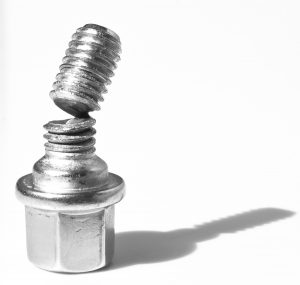Drywall offers a lot of advantages, but it is subject to dings, dents, scratches, and gouges that can be quite unsightly. Repairing such damage requires the use of spackle, which is fast, durable, and safe to use on gypsum or plaster.
However, spackle compound is not a joint or drywall compound. And while they are applied in a similar manner, the one big difference is that spackle dries considerably faster, often within 24 hours with minimal shrinkage. This means you can repair small scratches, gouges, dents, and dings quickly if you master the use of spackle.
Table of Contents
Getting Started with Your Spackle
The first step is to choose the right type of spackle needed for the work you are about to do. If you are repairing small holes, scratches, or gouges, a pre-mixed spackle should do the trick. However, if you are repairing larger surface areas, then you’ll want to go with spackle that contains acrylic. The acrylic will add some density and durability to the spackle.
Now you will need the right tools to spackle a hole in drywall and get the job done. What follows are the typical tools needed when making small repairs:
- Spackle Compound
- Putty Knife
- Small Brush and Cloth
- Fine-Grit Sandpaper
Be sure the putty knife is larger than the area that you will need to cover. Otherwise, you might get an uneven result. In addition, make sure that the sandpaper is fine-grit, so you do not create any rough spots after the spackle has dried.
Now you are ready to mix the spackle.
Mixing Spackle
If you are using a pre-mix paste, then you can skip this step as it is ready to go. Otherwise, you will need to take the powder form of the spackle and mix it with the right amount of water. The two basic types of powder spackle are all-purpose and lightweight. Lightweight is perfect for spackling small holes that are out of the way. While all-purpose includes acrylic and is well-suited for larger areas of damage, especially in places subject to repeat damage.
Clean the Debris
Next, you’ll want to clear the area that needs repair of any loose debris. You can start by using your fingers to wipe away any debris that is easily removed. Then switch to your putty knife or sandpaper to clean out the area even further before spackling the hole.
You can also use a small brush to ensure that the area surrounding the damage is clean and proper along with a cloth. You do not have to be a neat freak about it but remember that any loose material left on the surface is where the spackle is going to stick and that may not allow for a smooth surface.
Mix & Apply
Now you are ready to spackle. You should have already mixed the spackle or have the pre-mixed version ready to go. If you have never mixed spackle before, try a small amount to see how much water is needed to make the spackle thick enough to use, but not too thick.
Just apply the spackle to the putty knife and use downward strokes at a slight angle to apply the product to the hole or damaged area. You simply dip out just enough spackle to more than cover the hole, dent, or ding and then apply.
Cover the entire damaged area with the spackle and then let it dry. Remember to cover any leftover spackle that you might use later. Otherwise, it will dry out as well. Once you have filled the hole, scrape away the excess by holding the putty knife at a 90-degree angle. Do not worry about whether it is smooth or not, you can do that later with the sandpaper.
Also, remember to remove any excess spackle that might have gotten on the wall surrounding the damaged area.
Let It Dry
Once it is dried, inspect the area to see if the coverage is complete. If there is still some work to do, fill in the area again with more spackle and let that dry. Keep in mind that spackle will shrink a little when it does dry, so you may need to cover it again.
It generally takes about two hours for the spackle to dry, so be sure that the area goes untouched for that time.
Smooth Out the Surface with Sandpaper
Once it is fully dried, you can use fine-grit sandpaper to smooth out the surface. Remember to lightly sand the area so that you do not dig too deep into the dried spackle. Use the brush or cloth to clean away any dust particles once you are through sanding.
You can leave the spackle in place or paint over the area if you desire. Just be sure that it is dry and smooth before you apply any paint to the surface.
Additional Tips
For those who want to keep up the appearance of their homes by using spackle on the various dents and dings that show up on the drywall. There are a few things you can do to keep things neat and tidy while putting in less work.
Protect the Area
If there are areas of the drywall that get regularly damaged, consider adding some protection to the surface. Rubber corner protectors are a good start, but you can add whatever you like to the surface to keep it protected. Even a temporary rubber mat can be of service if you do not care what the area looks like, such as in a garage or workroom.
Keep Spackle at the Ready
If you have any leftover spackle, keep it in a tightly sealed can or container. You might want to put it in a tightly sealed plastic bag as well. The spackle will eventually dry up, but if you are planning on doing repairs around the home in the next week or two, then preserving what you have will save you time on mixing more.
Spackling large holes in Drywall
Should you be dealing with holes larger than 2″ in diameter, it may be necessary to purchase or create a wall-repair patch. This patch should be applied prior to the use of joint compound to secure it firmly.
By following these guidelines, you can spackle a hole in drywall effectively. Plus, you can save a little time and effort when you use the right tools. If you lack the time or experience, a drywaller near me might be the best option for a speedy professional result especially if you need to spackle drywall seams.
Founder of HandymanGuides.com and self-proclaimed “Mr. Fix-It”, Mike has countless years of experience building and tinkering with everything under the sun. He works as a local repair guy near Santa Monica, CA and when he’s not spackling drywall, he enjoys spending time with his wife and 2 daughters.








